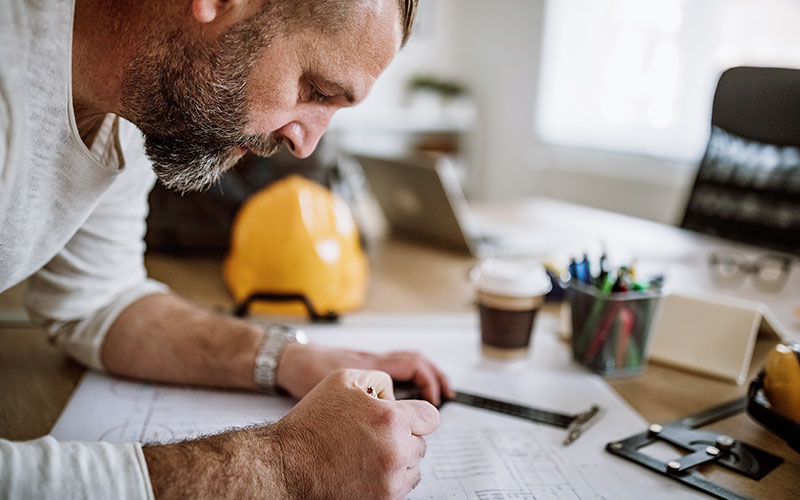
Can you patent an idea? Get the facts!
Every human invention begins as a spark in the mind — or, neurologically speaking, as activity in the brain's associative and administrative control regions. But that is only the first of many steps on the road to commercial realization.
One must travel down a relatively long path to bring an innovative idea to fruition as a full-fledged invention, and an even longer route to attain patent protection. Here, we will examine the standards of patentability for modern innovations and review best practices that, if followed, can boost your chances of filing a successful patent application.
Can a patent be granted for an idea in and of itself?
The short and simple answer is no. Although an idea is, of course, the root of any invention, you need to produce more than just your notion and a basic description of it for any patent office to consider your application seriously. Any attempt to gain Intellectual Property (IP) protection solely for a conceptual product or process will undoubtedly fail in the patent application process. Though it may perhaps be copyrightable as an original text, this would be of little help to an inventor or organization seeking commercial exploitation.
The first and perhaps most crucial element of a patentable invention is a concept that goes beyond an abstract idea and, at its core, provides a technical solution to an underlying technical problem. You do not need to create a working model of your invention, but you must be able to articulately explain how the creation will technically address the problem upon which it is focused. This may be accomplished through a blend of descriptive texts and visual aids such as diagrams or blueprints. You must also establish that the invention is novel and "non-obvious" — i.e., that it would not easily occur to a person skilled in the field to which the invention relates. In Germany and all other countries party to the European Patent Convention (EPC), this factor of non-obviousness is referred to as the "inventive step."
The value of a patent search
However, before you even begin working on a patent application in earnest, it is critical to conduct a patent search. Doing this allows you to examine the current state of the art in all industries pertaining to your newly imagined invention. You can start the process by looking through IP databases like PATENTSCOPE from the World Intellectual Property Organization (WIPO) and making use of cutting-edge search tools like Dennemeyer Octimine to quickly and reliably collate and analyze all the data you need.

If worst comes to worst, and you find a published document with relevance for your invention, then you are back to the drawing board. But all is not lost, as you can feel relieved for not having spent significant time, effort and, perhaps, money on a fool's errand. Patent searches are valuable for uncovering prior art that is similar but not identical to your proposed invention. This knowledge might also be helpful in that it alerts you to the possibility of future litigation. After all, forewarned is forearmed.
Choose the right protection for your invention
The nature of your invention — which now has evolved from a mere idea into a novel, non-obvious technical solution to a problem — will determine which form of patent protection you will select. In turn, the protections available vary by jurisdiction. Consider:
- In the United States, you can obtain utility, design or plant patents. More likely than not, you will want to apply for a utility patent.
- In Europe, for any invention that would fall under the American category of a utility patent, you would simply apply for a "patent." In certain member states, including Germany, you could alternatively apply for a utility model, which has looser standards for eligibility but only protects your invention for seven to 10 years, depending on the country.
- Some Asian nations such as Japan follow the EU's model of offering patents or utility models. China, by contrast, considers designs part of the "patent" category while also offering utility patents or utility models. On the other hand, India uses "patent" to designate utility patents.
- Although it is possible to apply for a provisional patent application in some countries – including the United States, India and Australia – doing so provides little true protection and typically only offers 12 months' leeway. Only apply for a provisional application if you absolutely cannot afford the conventional patent process upfront but know that you will be able to shortly after that.
Perfecting your patent application
After determining which type of patent protection you will seek for your invention, it is time to begin drafting your patent application.
Jurisdictional requirements for the procedure vary — and it behooves you to educate yourself about them. Common elements of a patent application include:
- An abstract – a basic description of your invention
- Claims – definition of the scope of protection
- A more detailed description of the device or process, including any relevant background information, details of its development, instructions for use, etc.
- Drawings – not required by default, but most applications include them to illustrate how the inventions function
- A formal request for grant of a patent (not applicable in every country)
- A declaration that you, and any other individuals you worked with, or your organization as a whole, are the patent owner or owners solely responsible for the invention
Your goal is to impress patent examiners who have looked at thousands of applications in their time, so go above and beyond whenever possible. Remember, cold, hard facts are the name of the game: Descriptions should be precise. Claims should be well-defined and state no more and no less than the invention's exact capabilities. Drawings and diagrams must clearly illustrate design and function.

Upon completing your application, file it according to the patent law in your jurisdiction and pay all applicable fees. Bear in mind that the examination will take time — it will be at least several months from the filing date before you get an answer — and you must remain engaged throughout. If your patent examiner has questions or objections, respond on time and provide whatever answers they seek.
Humanity's inventions have changed the world and will continue to do so. That is why it is imperative to protect your novel creations with patents. Munich lies at the center of the European patent sphere, and so Dennemeyer's Munich office is perfectly poised to be your partner through every step of the process. From assisting with drafts and searches to assigning you an expert patent attorney to oversee patent prosecution, our experts in Germany are ready to represent you at home and farther afield. Get in touch with our Dennemeyer & Associates Munich team today, and take the next step on the journey to market success.
Filed in

Take a closer look at some of the top pharmaceutical trends and how IP is driving and being driven by these changes.



